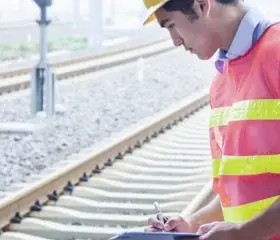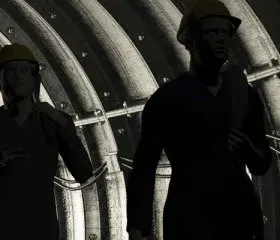/488003145-1600x400.jpg?width=300&name=488003145-1600x400.jpg)
The Client Role In Construction Safety Management: WHS Site Requirements
Construction projects involve many safety requirements, whether they involve the building of an entirely new structure or the modification of an existing one. This guide answers seven common questions clients ask about construction safety management. It will help you identify and minimise work hazards and ensure the safety of workers, visitors and members of the public on your work site.
Construction work is work on a site that involves the building, alteration, conversion, fitting-out, commissioning, renovation, repair, maintenance, de-commissioning, demolition or dismantling of any structure, and includes:
- The demolition or dismantling of a structure and the removal from the site of the resulting materials.
- The assembly of a structure from prefabricated materials (or the disassembly of prefabricated elements).
- Any excavation, landscaping, or site preparation carried out for the purpose of building or demolition work.
This describes work which involves especially hazardous conditions or materials. This includes:
- Work at a height in which there is a risk of a person falling two metres or more
- Demolition work
- Work involving the disturbance or removal of asbestos
- Work involving structural alterations that need temporary support to prevent collapse
- Work in a confined space
- Excavation to a depth greater than 1.5 metres
- The construction of tunnels
- Work on or near pressurised gas distribution mains and consumer piping
- Work on or near chemical, fuel or refrigerant lines
- Work on or near energised electrical installations and services
- Work in an area that may have a contaminated or flammable atmosphere
- Tilt-up and precast concrete construction
- Work on, or adjacent to, roadways or railways used by road or rail traffic
- Work on construction sites where there is any movement of powered mobile plant (e.g., excavators, hoists, concrete placement booms – see question 4 for a more detailed description)
- Work in an area with artificial extremes of temperature
- Work in, over or adjacent to water or other liquids where there is a risk of drowning
This is a statement that:
- Identifies a work activity assessed as having a safety risk or risks, and states these risks.
- Describes the safety measures that will need to be implemented to minimise these risks.
- Outlines the control measures that will be applied to the work activity.
- And finally, includes a description of the equipment used in the work and the qualifications required of the staff carrying out the work and the training
Moving plant is defined as the following:
- Equipment or machinery that moves under its own power, or is pulled or pushed by other moving plants.
- Equipment or machinery that moves on or around the construction site. It may also enter or leave the site.
- Road vehicles.
Generally, this term covers earth moving machinery, trucks, cars, forklifts, mobile cranes and elevated work platforms.
The answer to this question is an unequivocal “yes”. Each construction project should have its own WHS Plan developed in order to identify the relevant hazards, the means to control them and the procedures to be used. The plan should include, but not be limited to:
- A statement of WHS responsibilities and a list of the names and positions of all persons who have specific onsite WHS responsibilities.
- A detailed description of the procedures in place to ensure compliance with occupational health and safety induction training requirements.
- A detailed description of procedures for the collection and coordination of any health and safety information or issues raised by construction workers.
- A detailed description of the procedures for incident management. This includes the contact details of all personnel who will be involved in the process.
- A list of the site safety rules along with procedures ensuring that all persons onsite, including workers, contractors, suppliers and visitors, are informed of these rules.
- The processes for hazard identification, risk assessment and risk control for all work activities assessed as having WHS risks.
- The safe Work Method Statements for all High-risk Construction Work (refer to question 2).
In addition, the plan should also cover processes for the following aspects of the construction work:
- Visitors to the construction site.
- Safety identification and signage.
- Construction site security.
- Hazardous substances and dangerous goods.
- Electrical safety.
- Permits for construction work.
- Lifting equipment on construction sites.
- Transport, loading and unloading.
- Personal protective equipment.
- Emergency and emergency equipment.
- Equipment safety.
- Waste management.
- Environmental effects.
- Construction site workplace facilities.
All construction personnel should receive WHS induction and training. In addition, some jurisdictions also require managers to ensure that construction workers hold valid WHS Construction Induction Certificates. These certificates can be obtained either by attending an approved WHS induction course or, if the worker has relevant work experience, they can apply to receive a certificate.
Where required by legislation, safety awareness training must be given to all personnel working on construction sites. This training should be delivered by a registered provider.
Safety awareness training certificates are portable (i.e. if a worker has a certificate obtained with a previous workplace, this can be recognised) and are valid for three years.
Yes, it is, and consequently, safety measures need be put into place to control this risk. Measures may include, but not be limited, to the following:
- isolate vehicles and plant used in construction work from persons onsite.
- secure areas where moving plant is used with fencing, barriers, barricades, temporary warning or control signs, or a combination of these.
- plan the use of moving plant to ensure that it is visible at all times.
- control traffic movement with people working as spotters and safety observers.
- implement safe working distances between persons and moving plant which is to be maintained at all times.
- use audible reversing alarms on moving plant.
- minimise the amount of moving plant working at one time. Where multiple plant is operating around the work site, a person should be designated to direct it.
- make sure systems of control, such as traffic lights and notices, are placed at all entrances and exits where moving plant travels through the work area by public roads.
- delivery vehicles present a particularly high hazard when reversing, loading and unloading; delivery and turning areas should be clearly identified and warning procedures put in place. These could include:
- The creation of a signposted area onsite that truck drivers must report to.
- The appointment of a designated observer to ensure all persons are clear of reversing vehicles.
- A communication and warning system for all persons near the delivery point.
Complex projects demand confident safety leadership.
Our Construction Safety Consulting services help clients meet their obligations, reduce risk, and keep projects moving safely and compliantly.Download Your Free Checklist PDF
Get instant access to our expert-designed checklist to help you. Simply fill out the form below to download your copy.SIMILAR READINGS

4 min read
4 min read
Seven reasons why strategically managing your health and...
Read More
2 min read
2 min read
Keep contractors and consultants safe on your work...
Read More
4 min read
4 min read
Protect your staff with a rigorous and systematic Permit to...

3 min read
3 min read
Lead by example and create a Positive Safety...
Read More